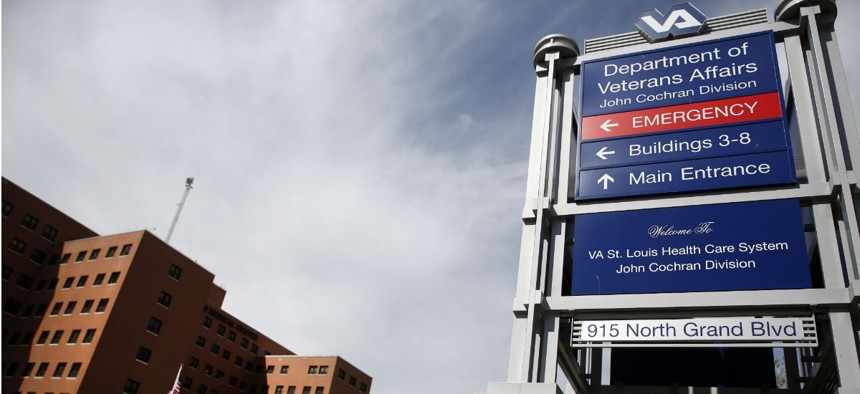
Jeff Roberson/AP
Twice as Many Vets Now Are Eligible for Non-VA Care
Change to Choice program calculates distance between veterans' homes and nearest VA facility using the fastest instead of the shortest route.
More veterans will be able to access health care outside of the Veterans Affairs medical system now because of a policy change the department has made under pressure from veterans, lawmakers and veteran advocates.
VA has tweaked one of the Choice program’s eligibility requirements -- the criterion related to a veteran’s distance from the nearest VA facility – effective April 24. Instead of calculating geographic distance based on a straight line or, “as the crow flies,” the department will determine eligibility based on the actual driving distance between the veteran’s home and the nearest VA medical facility. VA will use geographic information system (GIS) software to calculate driving distance.
“The beneficiary travel calculation will now be made using the fastest route instead of the shortest route,” the department said in a press release.
The department anticipates that the change will double the number of veterans eligible for the Choice program, which allows certain vets to receive health care temporarily outside the VA if the department is unable to schedule an appointment for the veteran within 30 days, or the veteran lives more than 40 miles from a VA facility.
VA published an interim final rule in the Federal Register on Friday, and the change took effect immediately. The department also will notify vets by letter about the revised mileage calculation, and has published a fact sheet on the program. Comments on the interim final rule are due by May 26.
The program is a key component of the 2014 Veterans Access, Choice and Accountability Act, which President Obama signed into law last summer. The department began sending Choice cards to eligible veterans at the end of last year, mailing them out in three phases. But the roll-out created confusion, and many vets who believed they were eligible for the Choice program were turned away.
The department, which noted in the April 24 rule that basing the calculation on actual driving distance will increase the number of vets eligible for the program, also sort of defended its widely-criticized original interpretation of the law’s provision.
“In the interim final rule published in November, VA determined that it would use the straight-line distance between the veteran’s residence and the VA medical facility that is closest to the veteran's residence. We did so consistent with language in the conference report accompanying the final bill prior to its enactment,” the regulation said. “The conference report stated: ‘In calculating the distance from a nearest VA medical facility, it is the conferees’ expectation that VA will use geodesic distance, or the shortest distance between two points.’ H.R. Rpt. 113-564, p. 55. The shortest distance between two points is a straight line, so VA concluded that a veteran who is outside of a 40-mile radius of a VA medical facility would be eligible under this provision.”
VA also acknowledged in the April 24 rule that while the “conference report language appeared to state the conferees’ expectation, other statements in the legislative history suggest Congress was not of one mind regarding how the 40 miles should be measured.”
The Choice program runs through Aug. 7, 2017, or until the $10 billion fund is exhausted. The administration’s fiscal 2016 budget proposal recommended shifting any potential excess money from the Choice program into other areas, but lawmakers quickly shot down that idea in February saying it could end the program prematurely. House Veterans’ Affairs Committee Chairman Rep. Jeff Miller, R-Fla., called the proposal a “non-starter.”
As of March 17, nearly 46,000 vets have sought to receive care using the Choice program, according to VA data.
Vets with questions about the Choice program can call 1-866-606-8198.
NEXT STORY: Drone Deaths and the Myth of Precision







